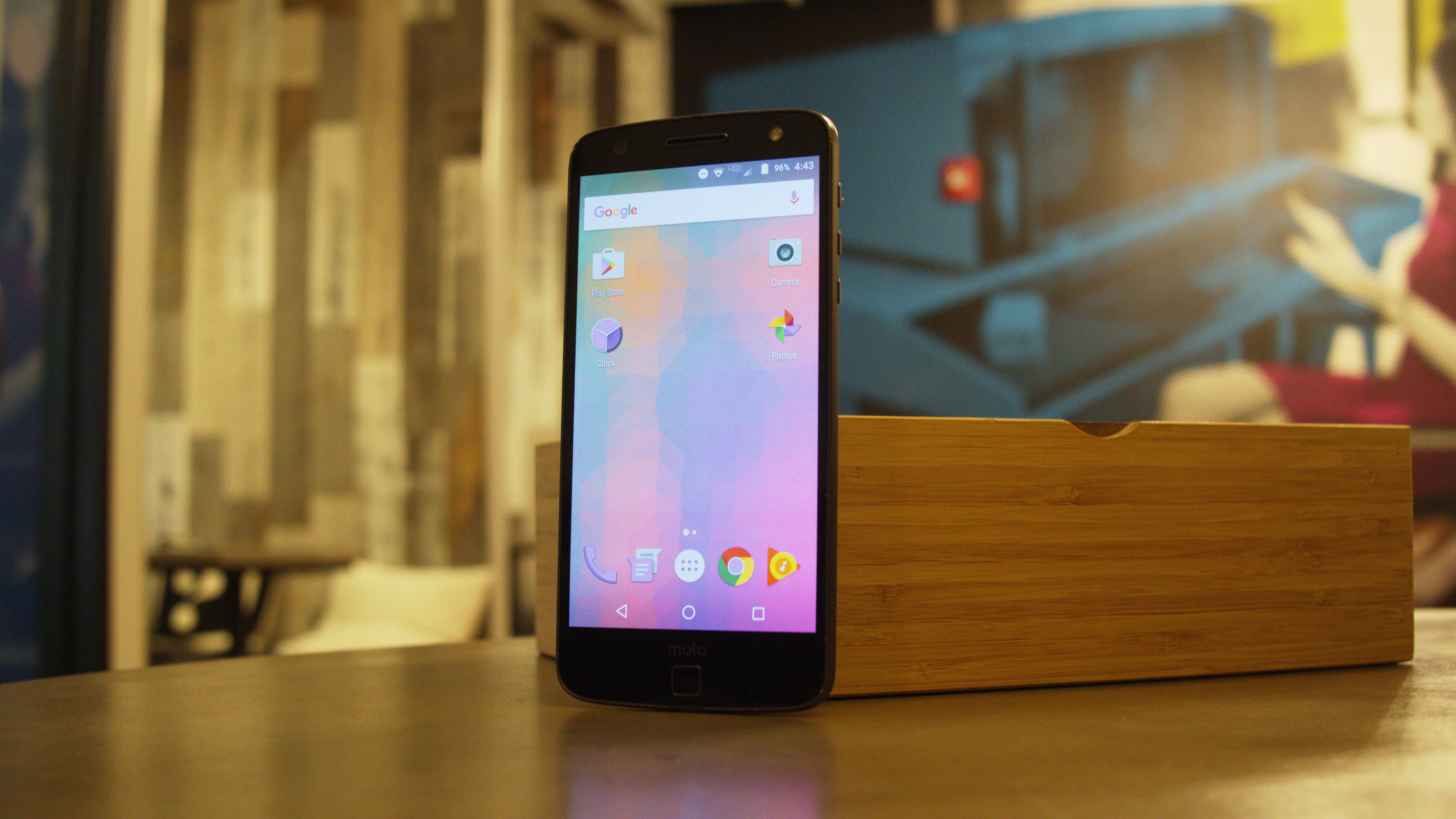TechRadar Verdict
The Moto Z Force is a competent smartphone on its own, made even better by a shatterproof screen and MotoMods. In addition, Moto gets props for a stellar camera and sticking to near-stock Android.
Pros
- +
MotoMods enhance the experience
- +
Bold design
- +
Excellent camera
Cons
- -
Fingerprint magnet
- -
Can't charge while listening to music
- -
Verizon and US exclusive
Why you can trust TechRadar
Update: The Moto Z2 Force is officially the new shatterproof hotness. If you're in the market for a new flagship phone that won't break when you drop it, you might want to direct your attention (and your money) toward the Z2 Force.
The new phone brings along with it a Snapdragon 835 mobile platform, putting it on part with the Samsung Galaxy S8 in power potential. Additionally, we've received exclusive confirmation that the new headset will be Daydream-capable very soon.
If you're still interested in the original Z Force, there are a few reasons to consider it. The Moto Z Force, along with the Moto Z, can be used with Google Daydream, bringing high-fidelity virtual reality experiences to more than just Samsung's lineup of smartphones.
In order to use this phone in the Daydream View, you'll first need to update it to Android Nougat. Then, head to the Google Play store and download the Daydream app.
Original review follows below.
The formula that makes for a phone worth buying, up until this point, calls for good specs, world-class design, and a price that isn't too hard to swallow. But that could be changing soon.
Motorola is attempting to disrupt the equation with its modular Moto Z and Moto Z Force (known as the Droid Edition phones in the US).
Focusing in on the Moto Z Force, it's a flagship smartphone, first and foremost. It boasts a shatterproof screen, and inside and out you'll be hard-pressed to find any corners cut in terms of build quality, design and performance.
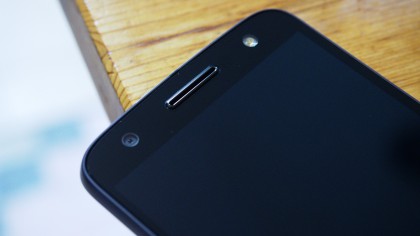
In addition, it also sports modular capabilities. Compared to LG G5 approach, the Z family wins out because it doesn't lean on them to provide the core functions, like powering the device. And better yet, these MotoMods can be hot-swapped at will to provide a boost in battery life, sound performance, or even to let you project your screen onto a wall.
On its own, the Moto Z is a powerful device with a unique talent that can make the experience even better – for a price. With MotoMods ranging in price from US$79 for the JBL SoundBoost to US$299 for the Insta-Projector mod, not everyone will be convinced to jump aboard the modular train. But for those who do, Motorola is promising that the entire line will be compatible with future Moto Z phones.
Currently, the US$720 Moto Z Force is a Verizon exclusive in the US, which is bad news for those abroad hoping to snag the shatterproof phone. Here's hoping that this variant, as well as the Moto Z, will land in your region soon.
For those of you in the states, Verizon is offering a sweet trade-in deal that makes its flagship price easier to bear. For an unspecified amount of time, you can get $300 in credit toward the Moto Z Force if you trade in the Samsung Galaxy S6, Samsung Galaxy S6 edge, Samsung Galaxy S6 edge+, Samsung Galaxy Note 5, LG G4, LG V10, HTC One M9, and iPhone 6.
If you don't have those phones, don't fret. You can still get a cool $200 for the Samsung Galaxy S5, Samsung Galaxy Note 4, LG G3, HTC One M8, iPhone 5, iPhone 5C or iPhone 5S, Droid Maxx 2, and Droid Turbo 2.
Lastly, you'll get $100 in credit for the Samsung Galaxy S4, LG G2, HTC One M7, iPhone 4, iPhone 4S, Droid Maxx, and Droid Turbo.
Design
The design of the Moto Z Force is essentially the same as the Moto Z, but on steroids. All it takes is holding one in each hand to quickly tell apart the difference.
At 163 grams, the Z Force weighs nearly 30 grams more than the standard Z. It's thicker, too, adding on almost 2mm of depth. While such a small number might not seem like a big deal, it's a difference that's easy to notice. The Moto Z is the world's thinnest smartphone, while the Moto Z Force is definitely not.
The 155.9 x 75.8 x 6.99mm build of the Moto Z Force is an impressive blend of glass and stainless steel that looks and feels every bit as "flagship" as it needs to in order to stick out amongst the tough list of competitors, both established and up-and-coming.
Looking at the phone head-on, the glass panel houses all of the usual suspects, like front-facing camera and ear speaker. You'll also find a few added niceties, like a real LED flash for selfies and a unique fingerprint sensor, which can cleverly wake the device and also put it to sleep.
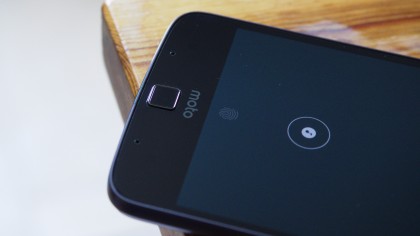
If you look close enough, you'll also notice two small holes near the fingerprint sensor. Those are proximity sensors, which are used to power the Moto Display function, allowing you to get a glimpse at the time and notifications just by waving your hand over the phone. It's one of those cool, small touches that you'll find yourself wishing every phone had.
Flipped around to reveal its back, you'll immediately notice a large camera bump. Yes, despite the added girth, the rear-facing camera protrudes no less than it does on the thinner Moto Z. At least Moto made this camera better to compensate.
Aside from the bump, the rear is home to a few more interesting design and hardware features. Thin strips of black glass occupy the phone's top and bottom. Sandwiched between them is a slate of stainless steel, subtly laser-etched with the Motorola logo and thin lines. It looks stunning, although the details worth admiring quickly become drowned out by fingerprint smears.
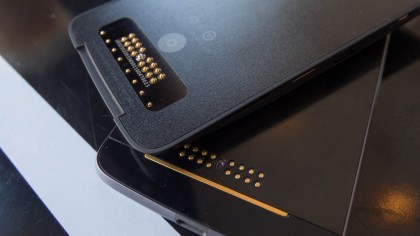
One feature that's impossible to shroud in fingerprints is the MotoMod connector, a set of gold-colored ports where the modular accessories snap onto the phone to transmit data, and/or battery juice depending on the mod.
Our review unit rocks the Lunar Grey aluminum trim that wraps around the device. On the right side of the Z Force are the volume keys and the textured power button. The button layout on the Z series might take a little longer to learn than it should due to the equidistant layout. Visually, they are distinct enough to tell apart, but it could be an error-prone arrangement for some.
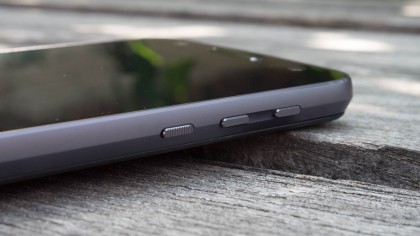
A few other attractions around the device are the nano SIM and microSD slot sitting on its top and the USB-C slot on the bottom. What you won't find no matter how hard you look is a 3.5mm headphone jack. Many thought that Apple would be the first to cut out the household jack with the iPhone 7, but Moto beat it to the punch.
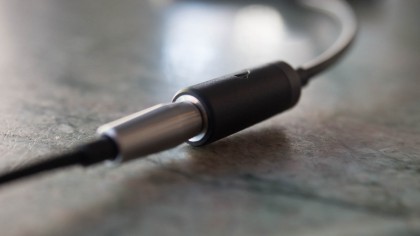
Thankfully, a USB-C to 3.5mm adapter is included in the box, so your old headphones will work fine here. You just won't be able to charge and listen at the same time.
Cameron is a writer at The Verge, focused on reviews, deals coverage, and news. He wrote for magazines and websites such as The Verge, TechRadar, Practical Photoshop, Polygon, Eater and Al Bawaba.
